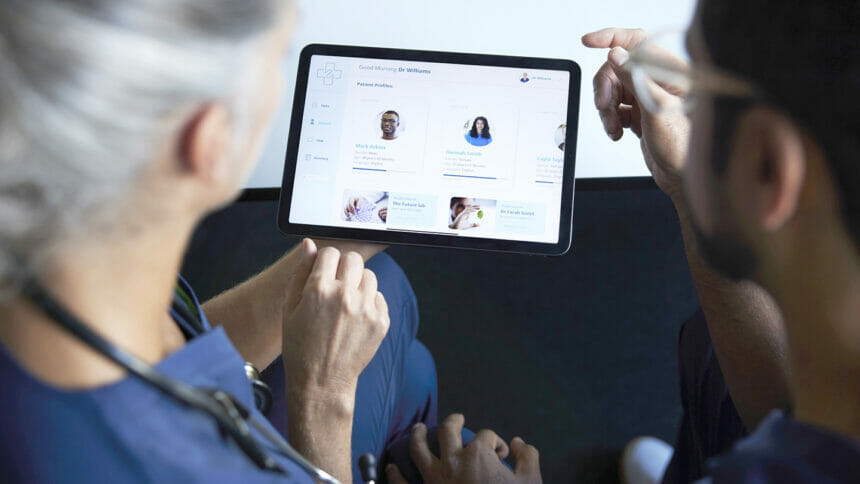
Technology is a “tremendous game changer” that is helping home care agencies provide better care to patients, retain staff and collect data for payers. That was the message during a webinar Thursday at the McKnight’s Home Care Online Expo entitled: “Evolution or revolution? How technology is shaping the home care market.”
Senior Helpers is leveraging telehealth and remote patient monitoring to provide more hours of care than the standard 25 to 30 hours a week patients currently average, according to CEO and founder Peter Ross, one of four panelists who spoke during the sweeping discussion on technology in the home. McKnight’s Home Care Editor Liza Berger moderated the conversation.
“I think offering personal care services on an hourly basis is going to change drastically over the next few years,” Ross said during the webinar. “We are leveraging technology, virtual care and remote patient monitoring to make a difference, but to also make it affordable to get care.”
The COVID-19 pandemic gave in-home healthcare technology a shot in the arm as providers looked for ways to maintain care in the home, while keeping patients and staff safe. Technology got a boost from the Centers for Medicare and Medicaid Services when it expanded telehealth coverage at the beginning of the pandemic, allowing healthcare providers to deliver a wider range of services virtually. While the public health emergency ends in mid-May, telehealth flexibilities will continue until the end of 2024.
In the meantime, home care and home health firms are continuing to find ways to expand the use of technology beyond the end of the PHE.
Help at Home, for example, captures virtual observations on a platform that allows clinicians to analyze patient conditions and intervene before a patient’s health worsens.
“It allows us to coordinate ambulatory care before emergency care usage or in-patient admission,” Help at Home Chief Clinical Officer Marianne Longo told the webinar audience.
The panel said perhaps the biggest benefit of technology is using it as a supplement or replacement for in-person care when caregivers are in short supply. Maj Alwan, chief strategy officer at consulting firm ThriveWell Tech, said telehealth can provide caregivers more scheduling flexibility and optimize time spent with patients. He said other systems can match the best caregivers to patients.
“That improves the connection between the human being whether they are virtually connected or visiting in person, so it increases satisfaction and retention,” Alwan added.
Still, technology is only as good as the protocols agencies have in place, Laura Wilson, managing director at healthcare consulting firm SimiTree, warned providers. Wilson said a technology platform not in sync with an electronic medical record system could create more work for staff who may have to double up on their efforts.
“That seems to be the real roadblock for implementation and actually getting technology used,” Wilson cautioned.
The panel agreed technology is worth the investment, especially if it can keep patients out of the hospital and save payers money. That could be especially valuable to home care providers as they negotiate with Medicare Advantage firms to pay for more care in the home.



